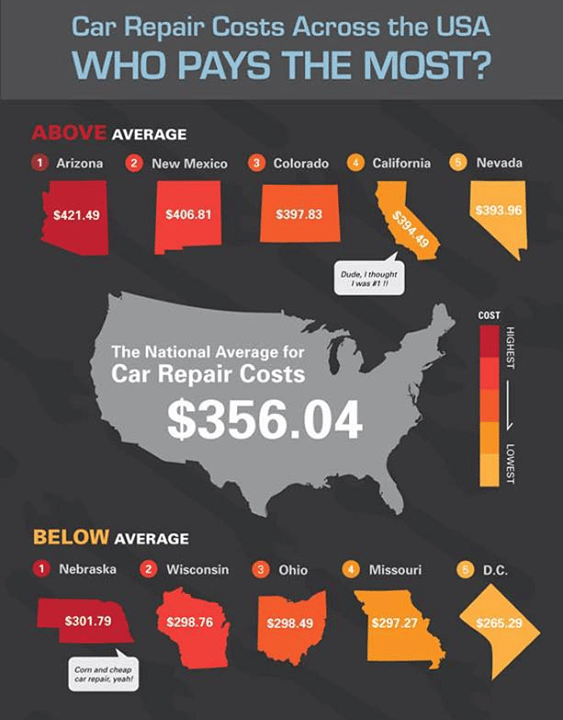Interested Concerning Those Dashboard Caution Lights In Your Auto? Find Out What They Indicate For Your Automobile'S Health And Safety
Interested Concerning Those Dashboard Caution Lights In Your Auto? Find Out What They Indicate For Your Automobile'S Health And Safety
Blog Article
Developed By- https://brake-line-fittings96173.anchor-blog.com/11499223/are-you-doubting-the-duty-of-car-detailing-in-keeping-or-raising-your-car-s-resale-value
When you're behind the wheel, those radiant warning lights on your control panel can be a bit bewildering. Do https://brake-fluid-price06283.newbigblog.com/37269179/intrigued-in-identifying-the-best-vehicle-service-center-near-to-you-discover-the-leading-10-pointers-that-will-certainly-assist-you-in-making-an-informed-decision know what they're trying to inform you regarding your automobile's health and wellness? Comprehending the relevance of these lights is vital for your safety and security and the longevity of your car. So, the following time one of those lights turns up, wouldn't you intend to analyze its message properly and take the necessary steps to resolve it?
Common Caution Lighting and Interpretations
Determine typical caution lights in your automobile and recognize their meanings to guarantee safe driving.
One of the most common caution lights consist of the check engine light, which signifies concerns with the engine or discharges system. If this light comes on, it's critical to have your automobile inspected quickly.
The oil pressure cautioning light suggests reduced oil stress, needing prompt interest to prevent engine damage.
A blinking battery light could suggest a damaged charging system, potentially leaving you stranded if not attended to.
The tire pressure tracking system (TPMS) light signals you to low tire pressure, influencing automobile security and gas efficiency. Neglecting auto restoration could bring about risky driving problems.
The abdominal muscle light indicates a trouble with the anti-lock stopping system, endangering your ability to quit quickly in emergencies.
Finally, the coolant temperature level alerting light warns of engine getting too hot, which can cause extreme damage if not settled swiftly.
Understanding these typical caution lights will help you resolve problems without delay and maintain safe driving problems.
Significance of Prompt Interest
Recognizing the usual caution lights in your vehicle is just the first step; the relevance of promptly dealing with these warnings can't be emphasized sufficient to guarantee your safety and security when traveling.
When a warning light brightens on your dashboard, it's your automobile's method of interacting a prospective issue that requires attention. Overlooking these cautions can result in much more serious issues later on, compromising your safety and security and possibly costing you a lot more out of commission.
Prompt focus to advising lights can avoid failures and accidents. For example, a blinking check engine light might suggest a misfire that, if left unattended, could cause damage to the catalytic converter. Addressing this quickly can save you from a costly fixing.
Likewise, a brake system advising light may signify low brake liquid or used brake pads, critical components for your safety when driving.
DIY Troubleshooting Tips
If you see a caution light on your dashboard, there are a couple of DIY troubleshooting pointers you can attempt prior to seeking professional aid.
The very first step is to consult your automobile's manual to understand what the specific caution light suggests. In some cases the issue can be as easy as a loose gas cap triggering the check engine light. Tightening the gas cap might fix the trouble.
An additional typical concern is a reduced battery, which can cause different advising lights. Checking the battery links for corrosion and guaranteeing they're safe and secure may fix the problem.
If a caution light lingers, you can attempt resetting it by detaching the car's battery for a couple of mins and then reconnecting it. Additionally, examining your vehicle's liquid levels, such as oil, coolant, and brake liquid, can help repair alerting lights related to these systems.
Verdict
In conclusion, understanding your cars and truck's warning lights is vital for maintaining your car running smoothly and securely. By quickly resolving these notifies and recognizing what they mean, you can stay clear of costly fixings and prospective failures.
Remember to consult your cars and truck's guidebook for certain information on each cautioning light and take action accordingly to make certain a hassle-free driving experience.
Keep informed, remain safe when driving!
